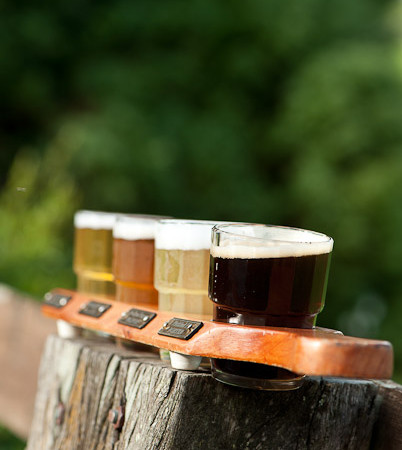News
Where does your beer come from?
Friday, June 3rd, 2011
Hops. Malt. Water. In 1516, the Duke of Bavaria, William IV, declared that these might be the only ingredients to be used in the production of one of the world’s favourite tipples. Centuries later, many beer producers still abide by this purity law, or Reinheitsgebot. We investigated where South Africa sources these ingredients and how the thirst-quenching drink is produced.
In Africa, hops, the ingredient that gives beer its distinct bitter flavour and aroma, can only be grown in George, thanks to its location 34°south of the equator. Why? Well, for the simple reason that this is the place on the continent that receives the latest sunlight. Traditionally, European hops grow best in areas with long days and frosty winters.
In George, Gerrie Brits, chief hops researcher and cultivator at South African Breweries (SAB), has specially bred the Southern Promise hop, that’s specially adapted to our relatively short days and mild winters. It’s quite a sight to see the vines of green cones hanging on their metre-long trellises. Picking off and breaking open a green bud reveals myriad waxy leaves coated with sunshine-yellow glands responsible for the plant’s sharp, bitter taste.
From the vines, the cones are stripped, cleaned and dried, before they’re compressed into bales and sent off to SAB in Newlands as well as several independent microbreweries.
Towering amidst Caledon’s golden grain fields is a cluster of silos housing the bulk of the barley used to produce the malty magic discernable in every glass of beer.
According to Angus McFarlane, maltings manager at SAB Maltings, barley has to go through three distinct stages before it can be called malt. Firstly, the grains have to be steeped in water, then drained and allowed to germinate. As soon as the first leaf starts sprouting, the germination process is stopped in a process called kilning, during which hot air is blown on the grains. This results in a more brittle kernel with the characteristic nutty flavour we associate with malted drinks.
Next, the malt is roasted in big batches according to the character required for the respective beer that’s being made. For a lager, brewers use a pale malt, while ales and stouts need a darker roast.
The life force of every beer or ale, water is the catalyser that lets hops and malt ferment into refreshing perfection. Be it on an independent artisanal or big commercial scale, the process basically remains the same according to Mark Humphrey, one of Napier Brewery’s brewers.
Firstly, the malted barley is crushed. Then, hot water is added in a process called mashing, during which time the barley’s starch is converted into sugar. The sugary water, called liquid wort, is then separated from the barley and put into a copper kettle called a mash turn along with hops, after which the mixture is boiled.
After the hops have been filtered out and the mixture cooled, either a bottom-fermenting or top-fermenting yeast culture is added. A bottom-fermenting yeast culture is generally used for making lager, while the top-fermenting yeast is used for ales.
Once fermentation is complete, presto! Blissfully, bubbly beer!
If all this talk of beer has given you a monster-sized thirst, why not invest in a couple of brewskies by some of these outstanding artisanal producers:
Sources:
http://www.birkenhead.co.za/index.php/Brewery
http://www.napierbrewery.co.za/contact.html">http://www.napierbrewery.co.za/contact.html
http://foodwithastory.co.za/View-Business/137/Napier-Brewery
http://en.wikipedia.org/wiki/Beer">http://en.wikipedia.org/wiki/Beer
http://www.sablimited.co.za/sablimited
By Annette Klinger








